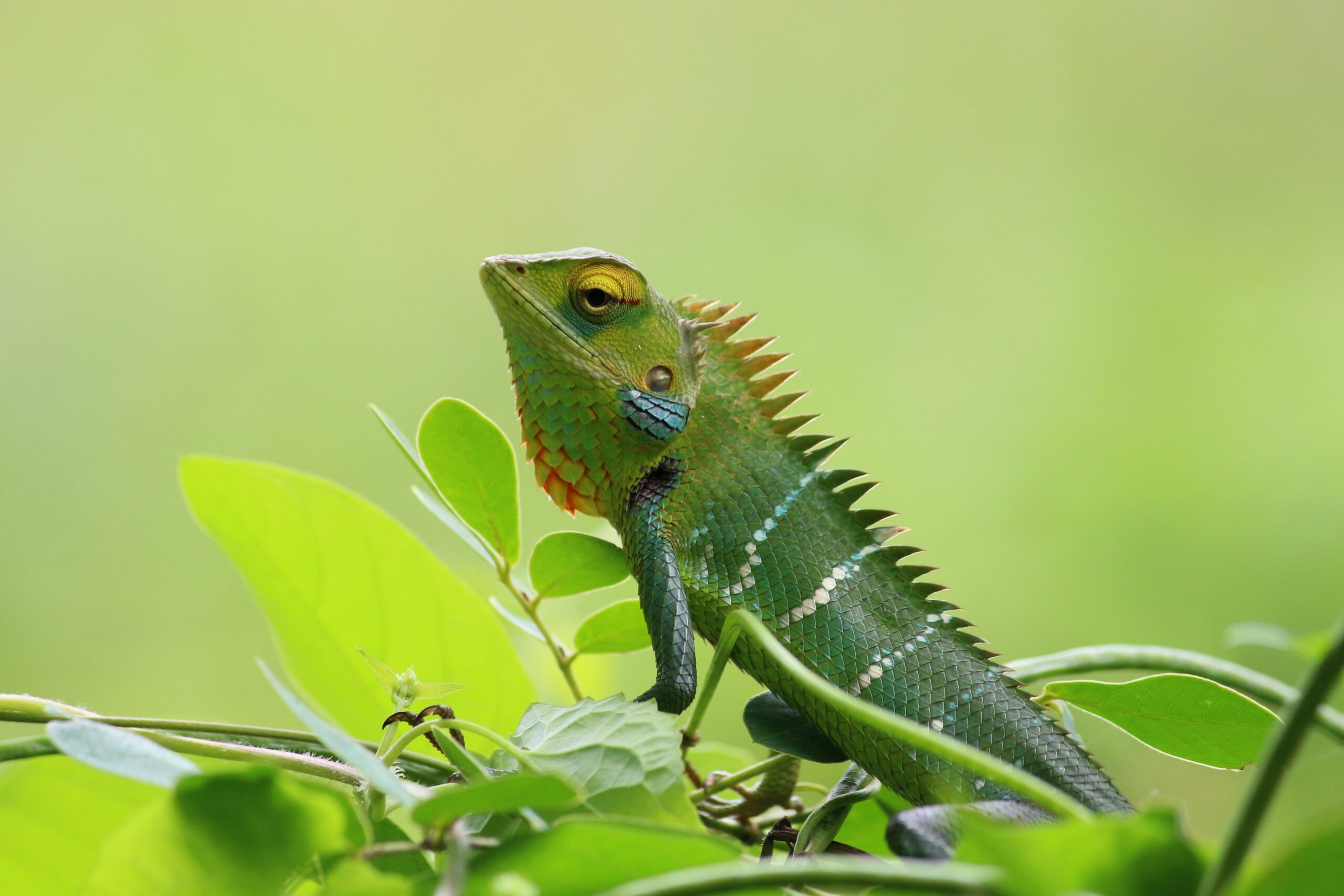Welcome to the mesmerizing and camouflaging world of chameleons, fascinating creatures renowned for their remarkable ability to change color and blend seamlessly into their surroundings. The chameleon belongs to the animal kingdom’s order Squamata and the family Chamaeleonidae. These unique reptiles have captivated human imagination with their intricate color patterns and distinct physical features.
The chameleons is known for its iconic features, including its bulging eyes, elongated tongues, and prehensile tails. They have specialized zygodactylous feet, meaning their toes are fused into two groups that allow them to have a strong grip on branches.
The chameleon exhibits remarkable color-changing abilities, a trait used for communication, camouflage, and temperature regulation. These reptiles vary in size and coloration depending on the species and their natural habitat.
Chameleon Types
There are approximately 200 known species of chameleons in the world, with a wide variety of unique characteristics and color patterns. Some popular types of chameleons include the Veiled Chameleon, Panther Chameleon, and several other popular species:
Veiled Chameleon: The Veiled Chameleon, also known as the Yemen Chameleon, is one of the most popular pet chameleon species. It is native to the Arabian Peninsula and is characterized by its large casque on top of its head and the striking coloration of males, which can range from bright green to yellow or even blue.
Panther Chameleon: The Panther Chameleon is native to Madagascar and is known for its remarkable ability to change colors. Males of this species exhibit vibrant hues, including shades of red, orange, blue, and green. The females have a more subdued coloration but still display stunning patterns.
Jackson’s Chameleon: Jackson’s Chameleon is native to East Africa and is easily recognized by its three prominent horns. It has a triangular head and a variety of color variations, including greens, browns, and combinations of these hues. Jackson’s Chameleons are known for their calm temperament.
Fischer’s Chameleon: Fischer’s Chameleon, also known as Usambara Two-horned Chameleon, is native to Tanzania. It displays a range of colors, including green, yellow, and brown. Males possess two distinct horns on their snouts, while females have smaller, less pronounced horns.
Oustalet’s Chameleon: Oustalet’s Chameleon, also called the Malagasy Giant Chameleon, is native to Madagascar. It is one of the largest chameleon species, reaching lengths of up to 2 feet. They exhibit various shades of green and brown and possess a relatively calm temperament.
Pygmy Chameleon: The Pygmy Chameleon, as the name suggests, is one of the smallest chameleon species. Native to Madagascar, these tiny chameleons have a muted coloration of brown, green, or gray. They are well-suited for life in dense foliage and are known for their agility.
Unique Chameleon Characteristics
Chameleons possess several unique characteristics that distinguish them from other lizards. Their most notable feature is their ability to change color. This adaptation is achieved through the movement of specialized cells called chromatophores in their skin.
Chameleons also have independent and rotating eyes, allowing them to have a wide field of vision without moving their heads.
Conclusion:
Chameleons, with their remarkable color-changing abilities and unique physical adaptations, are truly fascinating creatures. Their intricate color patterns, elongated tongues, and prehensile tails set them apart in the reptile world.
From the enchanting Panther Chameleon to the diminutive Pygmy Chameleon, each species of chameleon offers a glimpse into the diversity and beauty of these reptiles.
As we continue to study and appreciate these magnificent creatures, let us also work towards their conservation and the preservation of their natural habitats to ensure the survival of these remarkable reptiles for generations to come.






























































